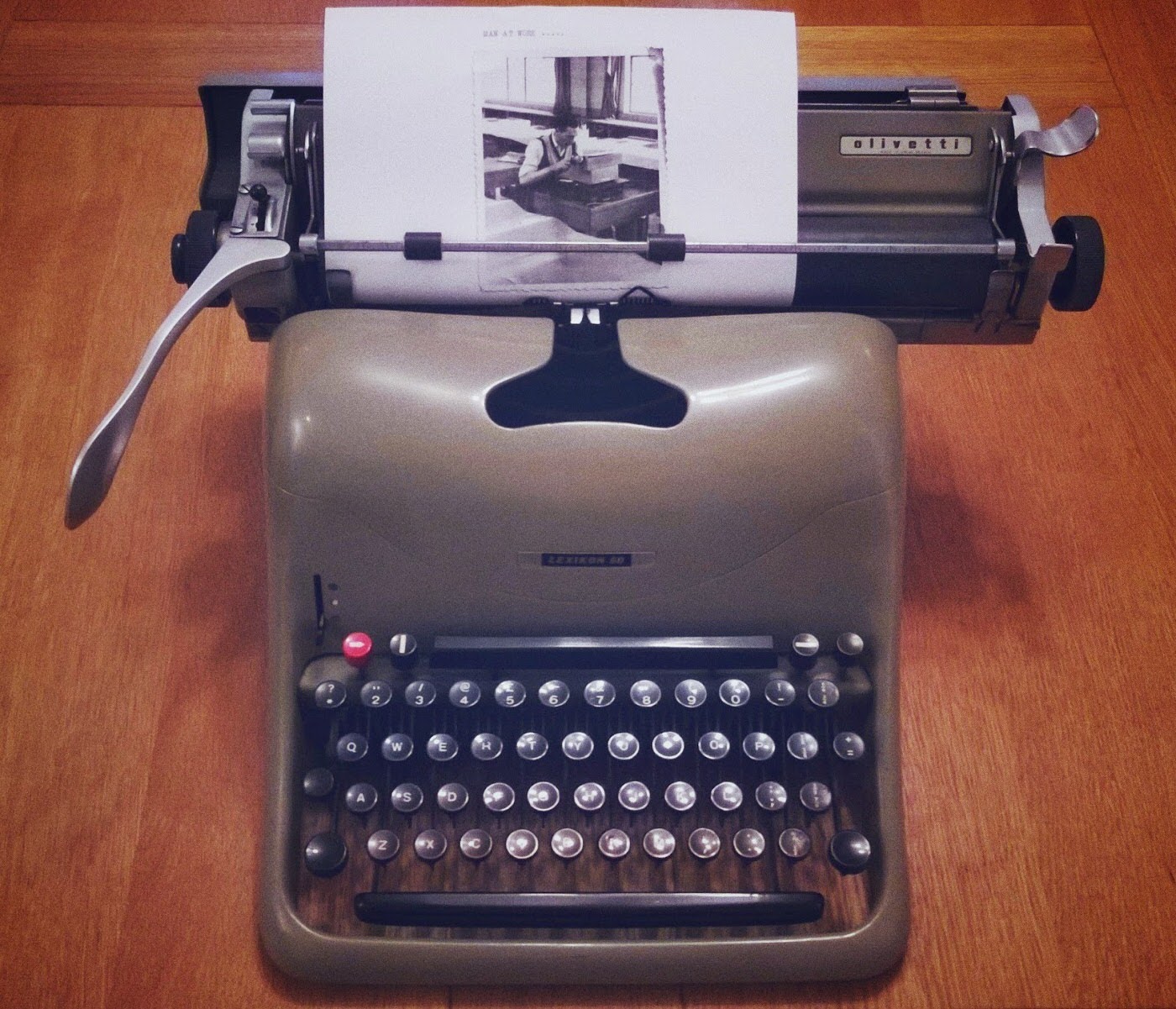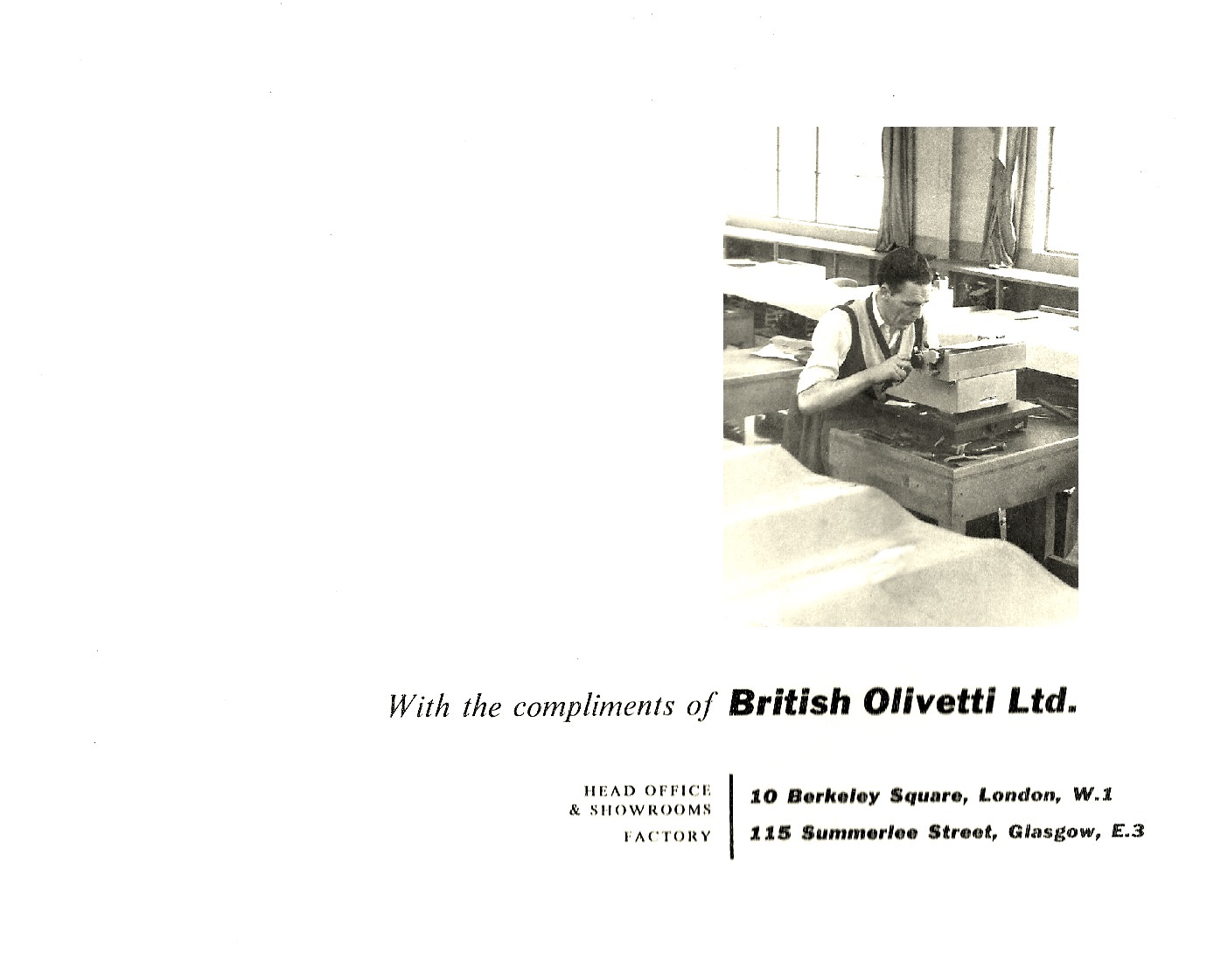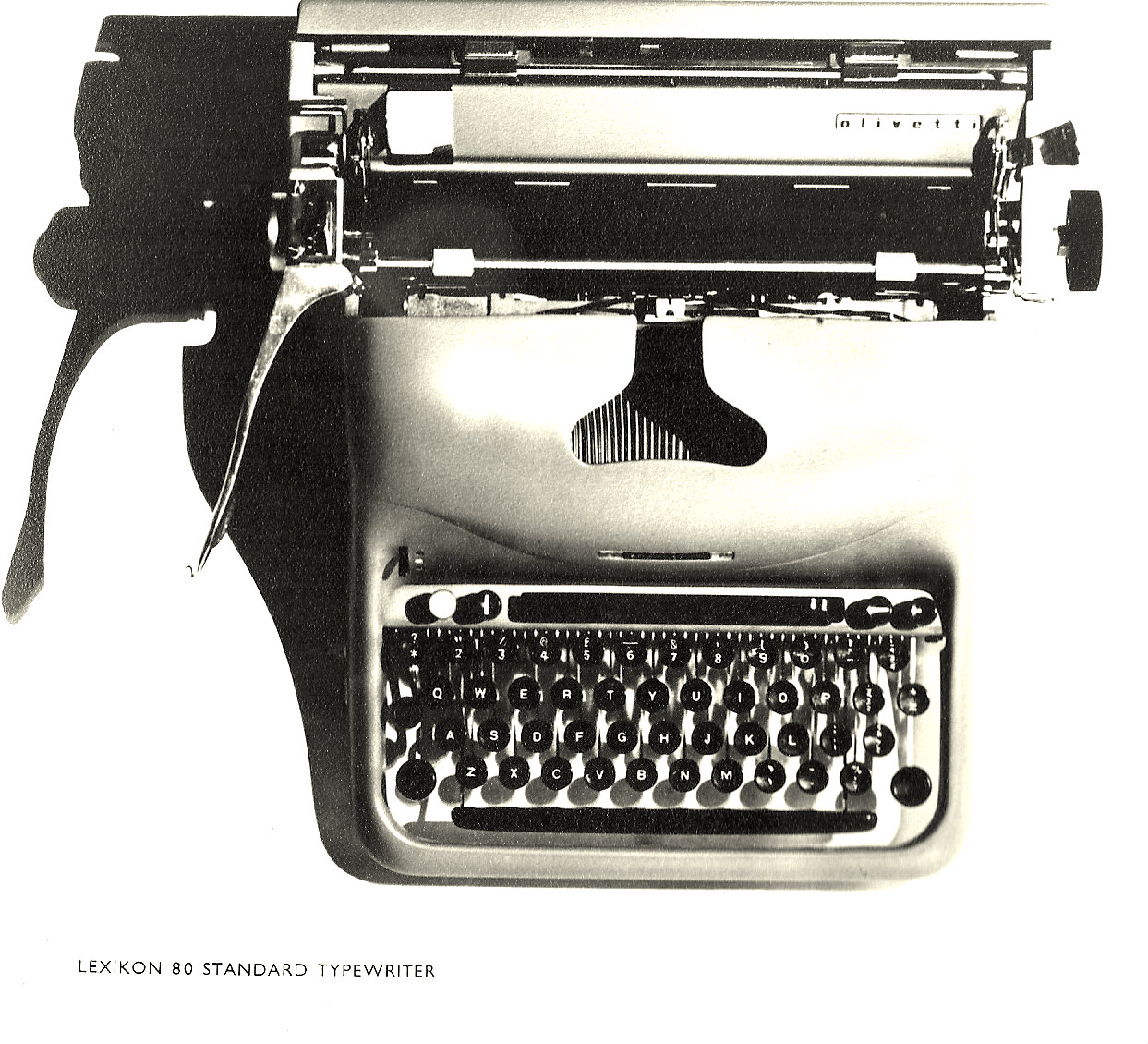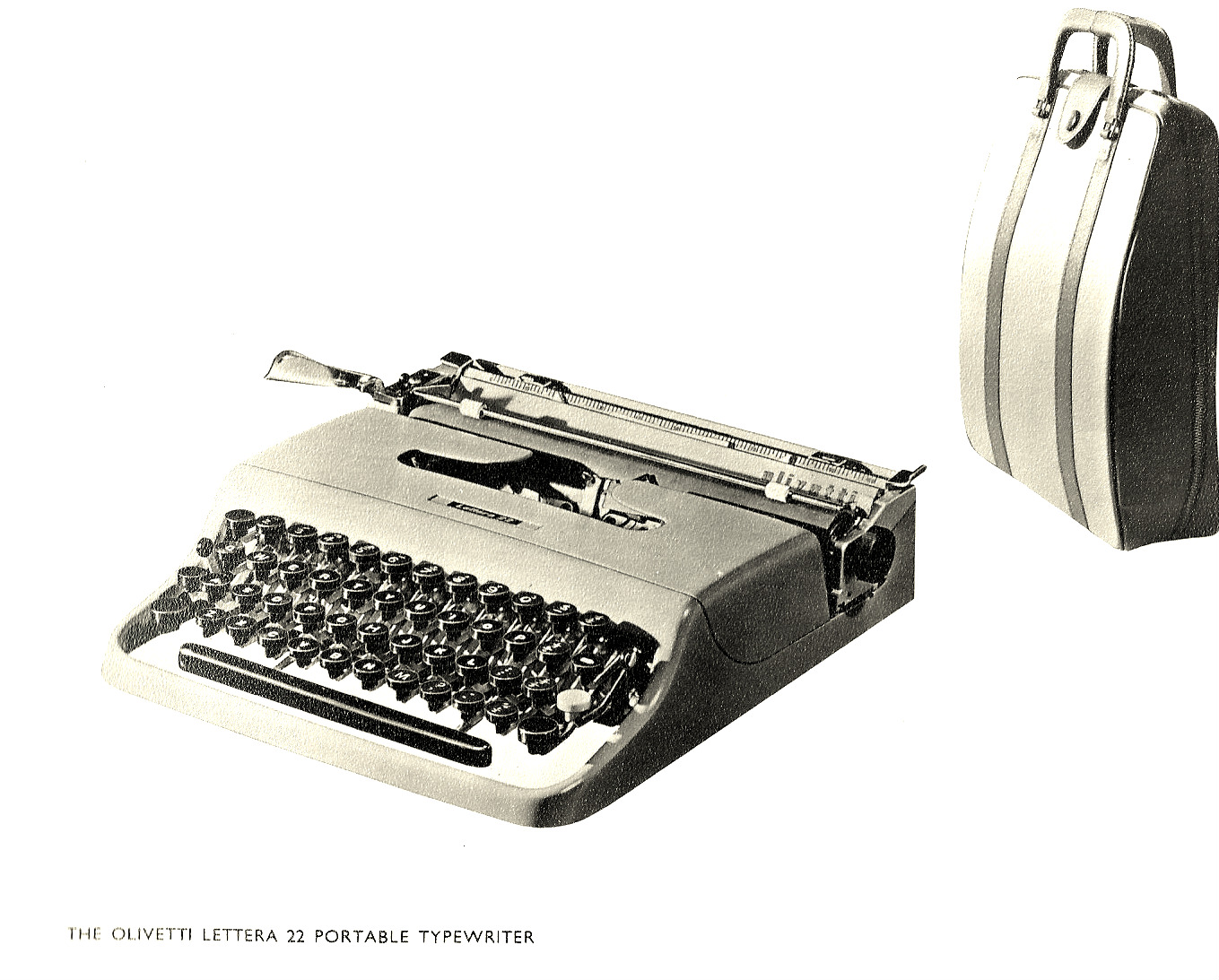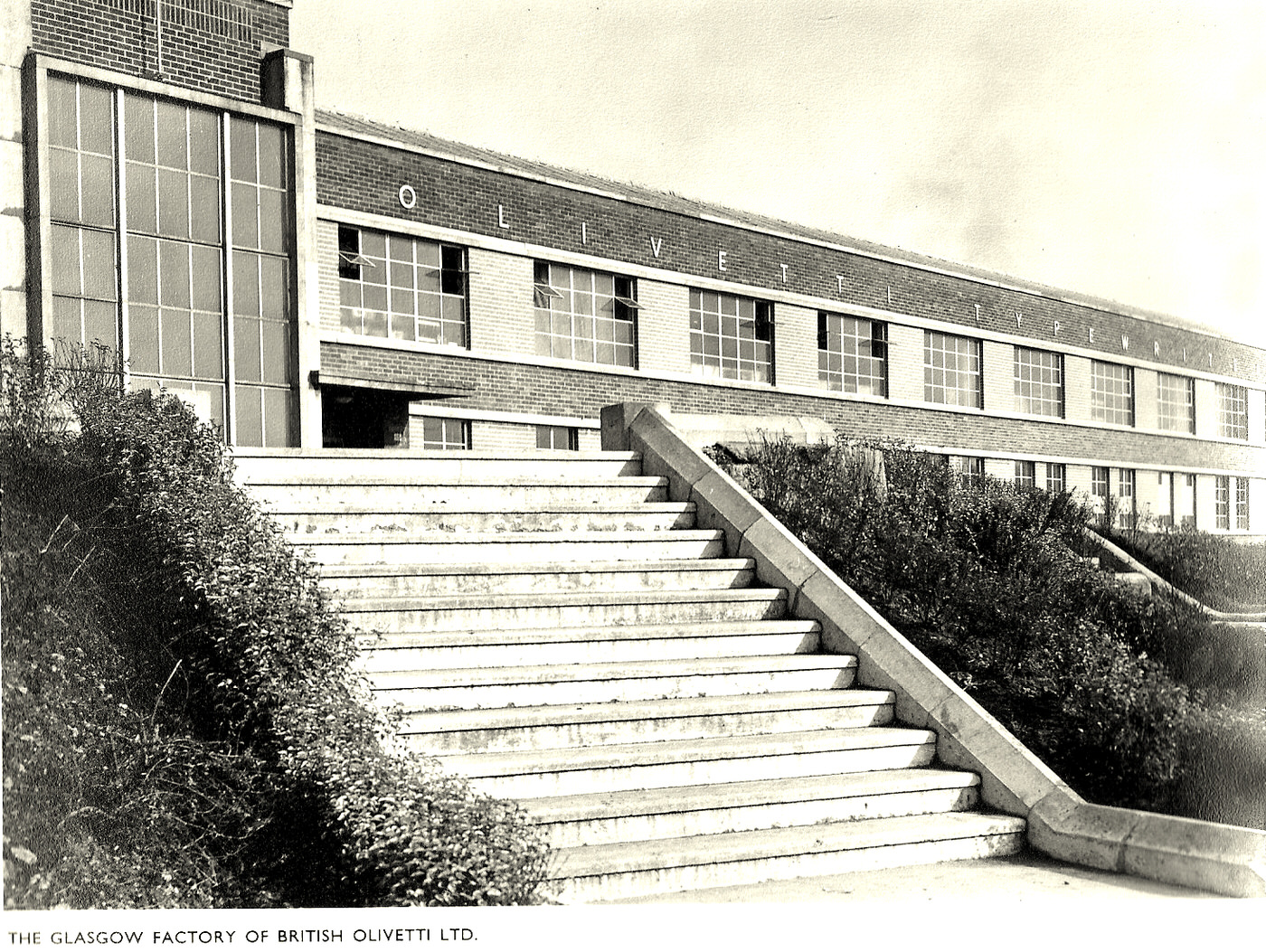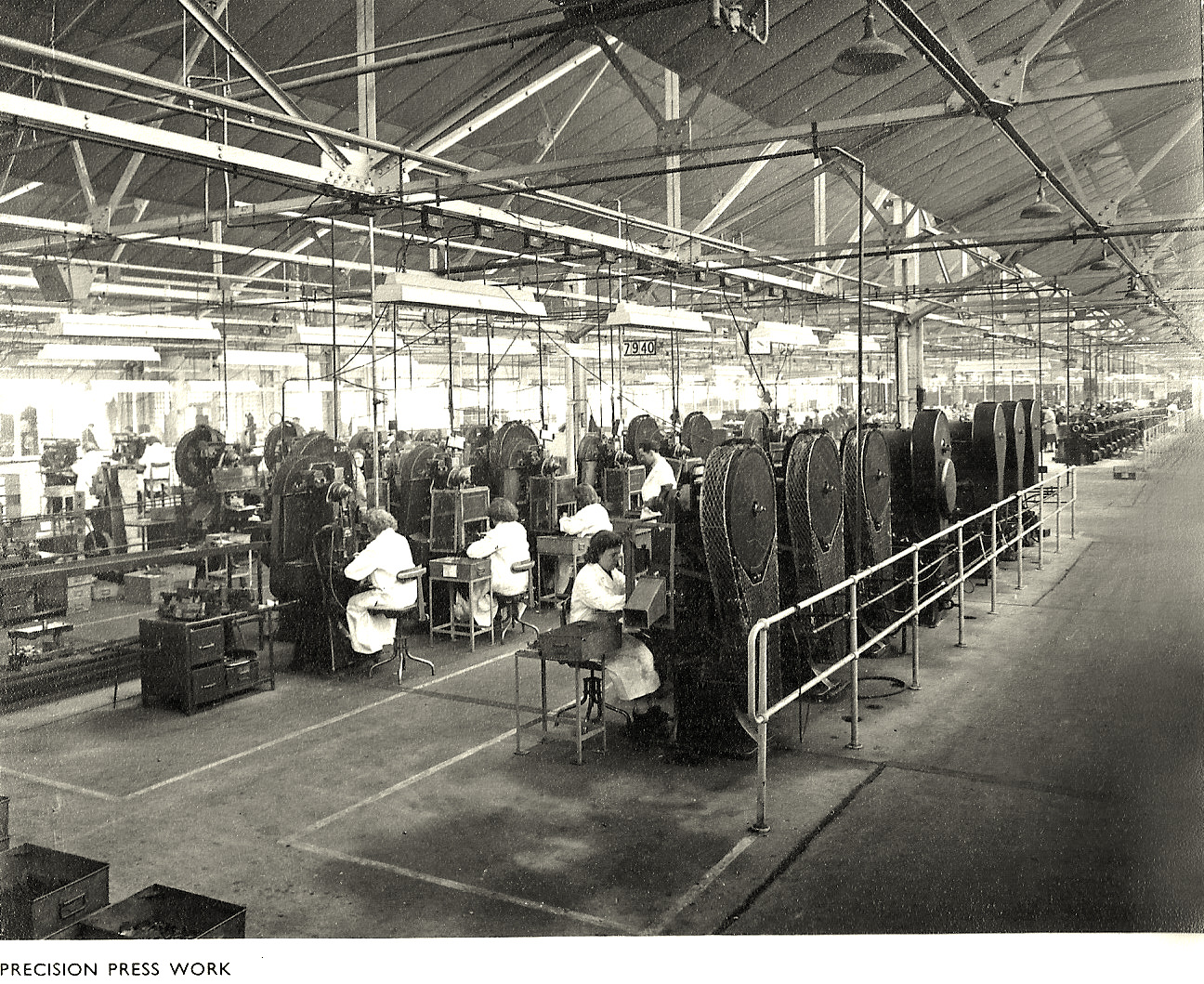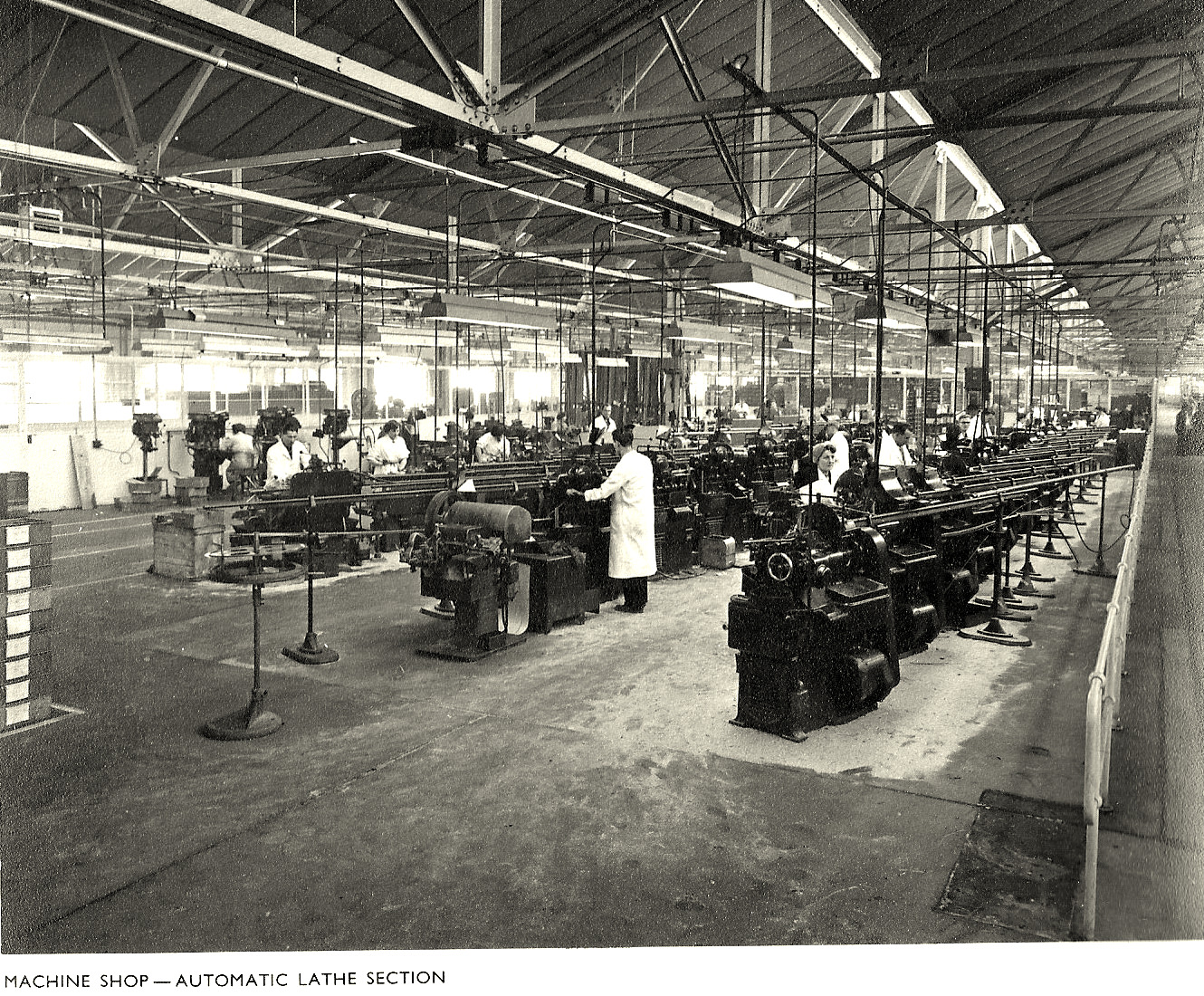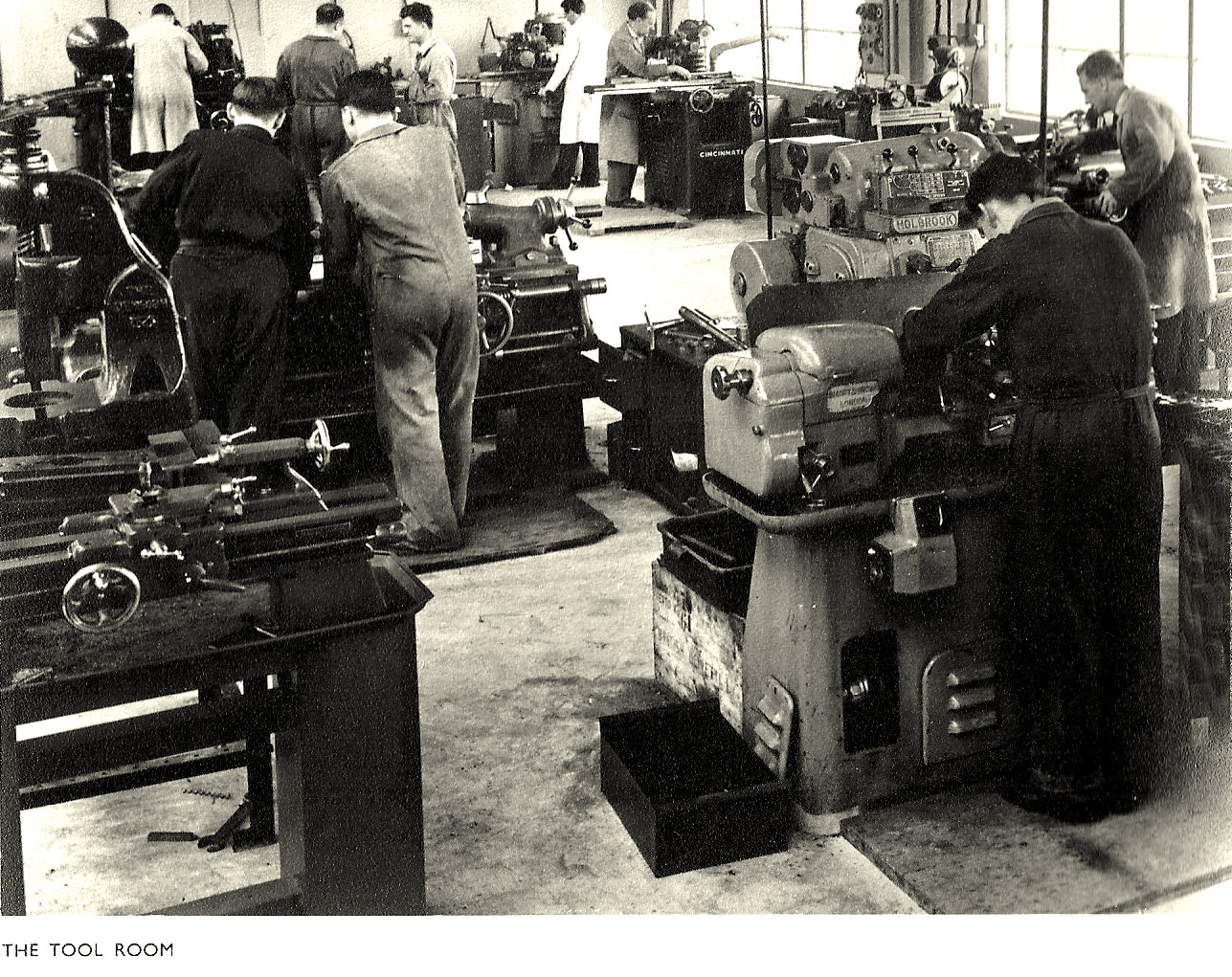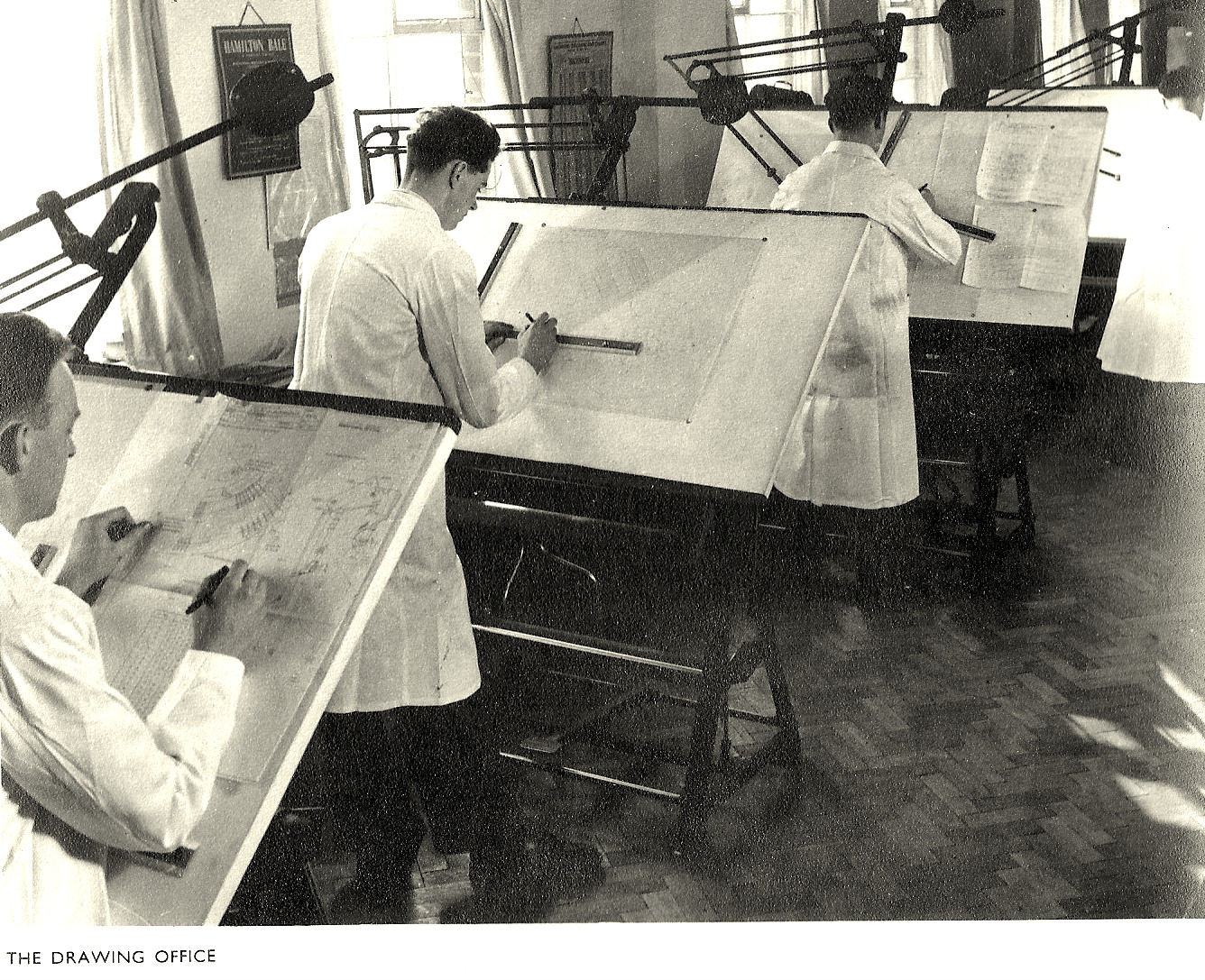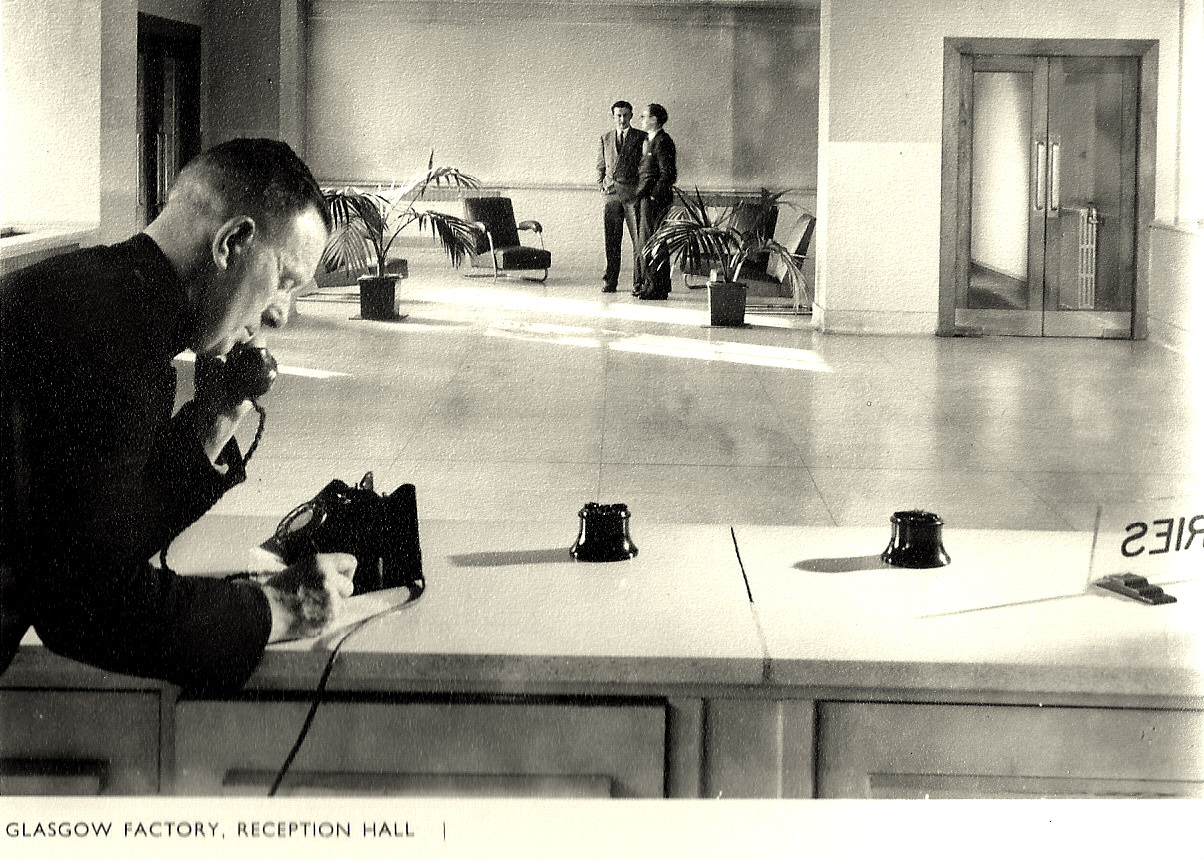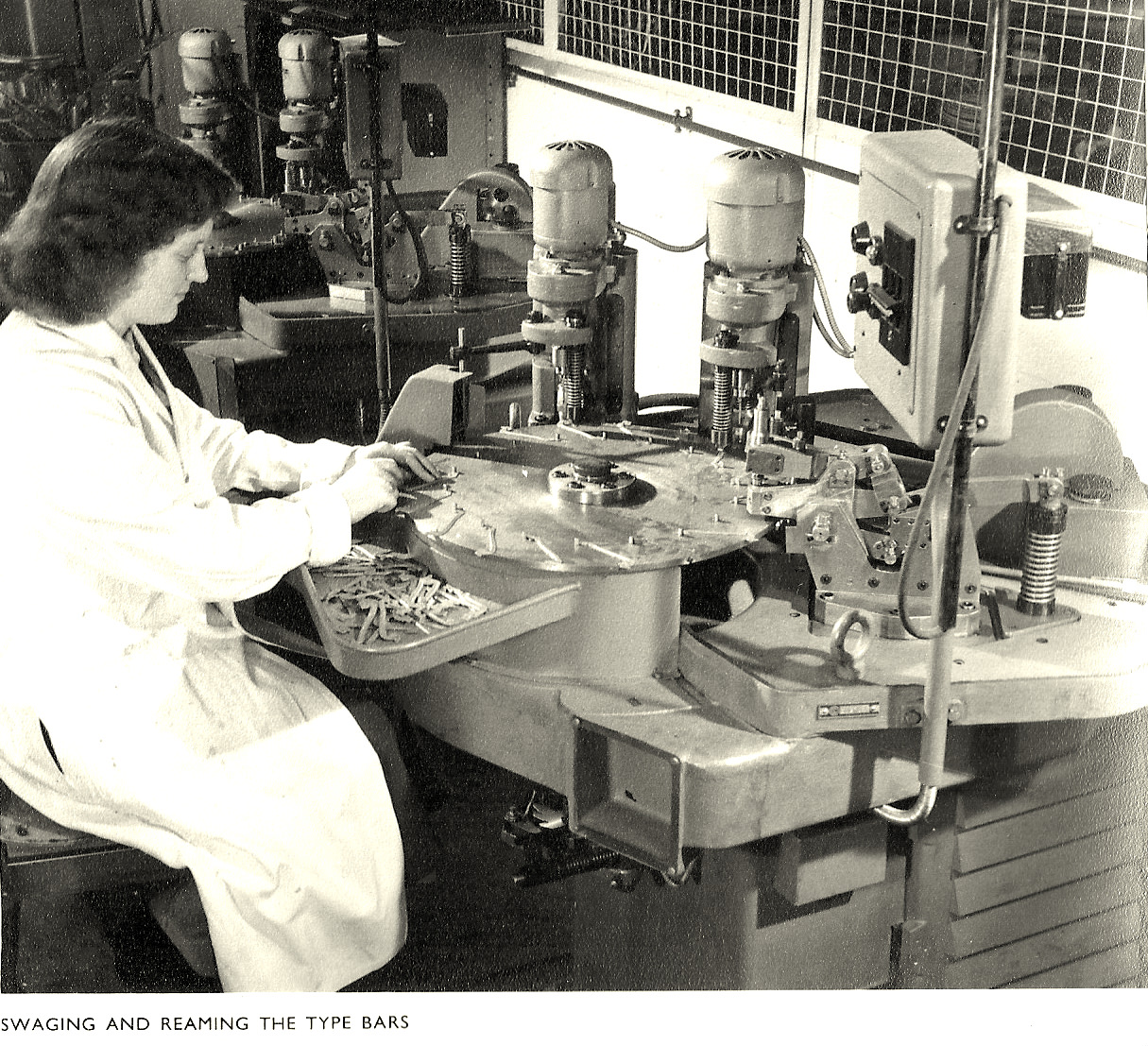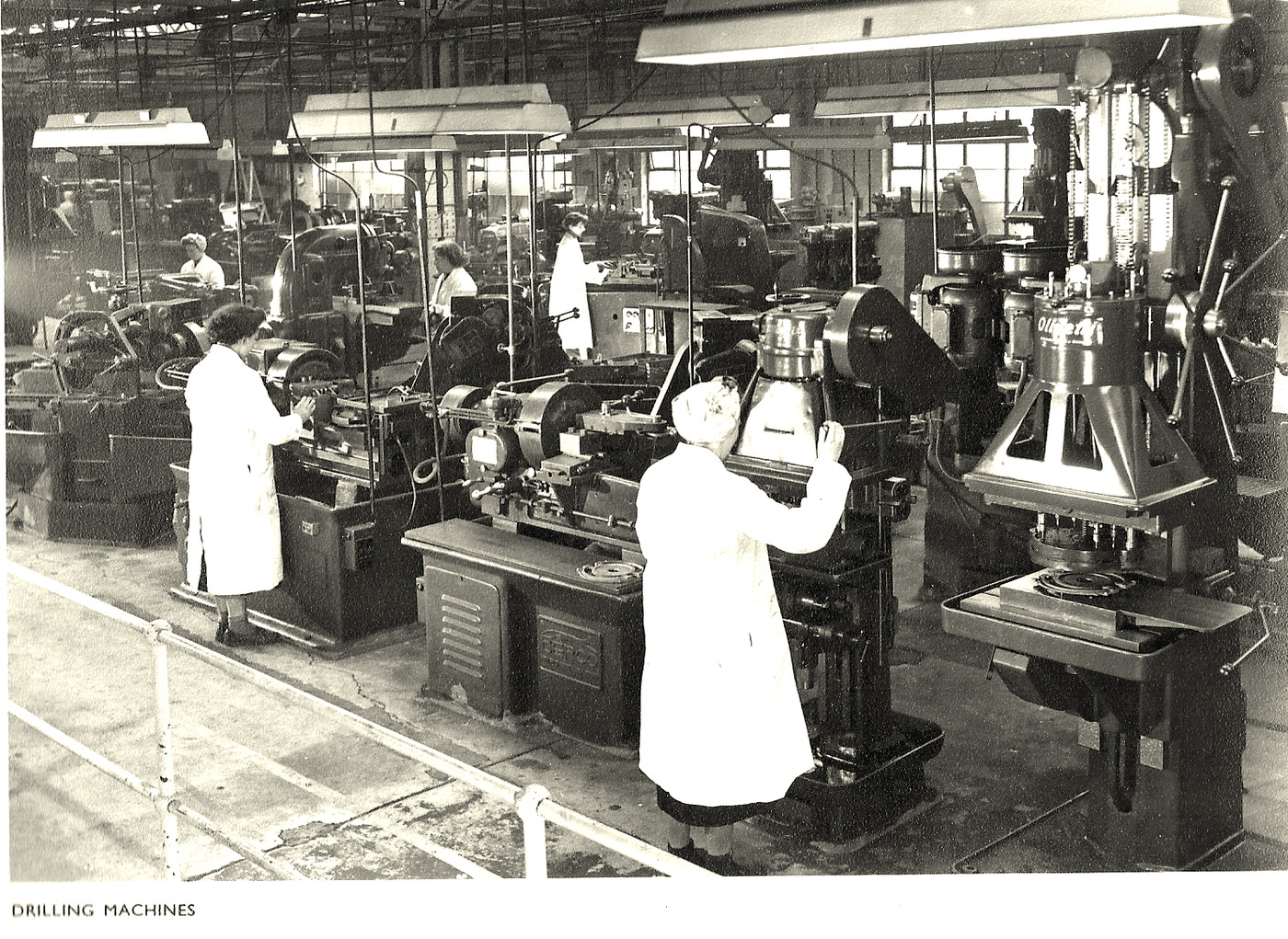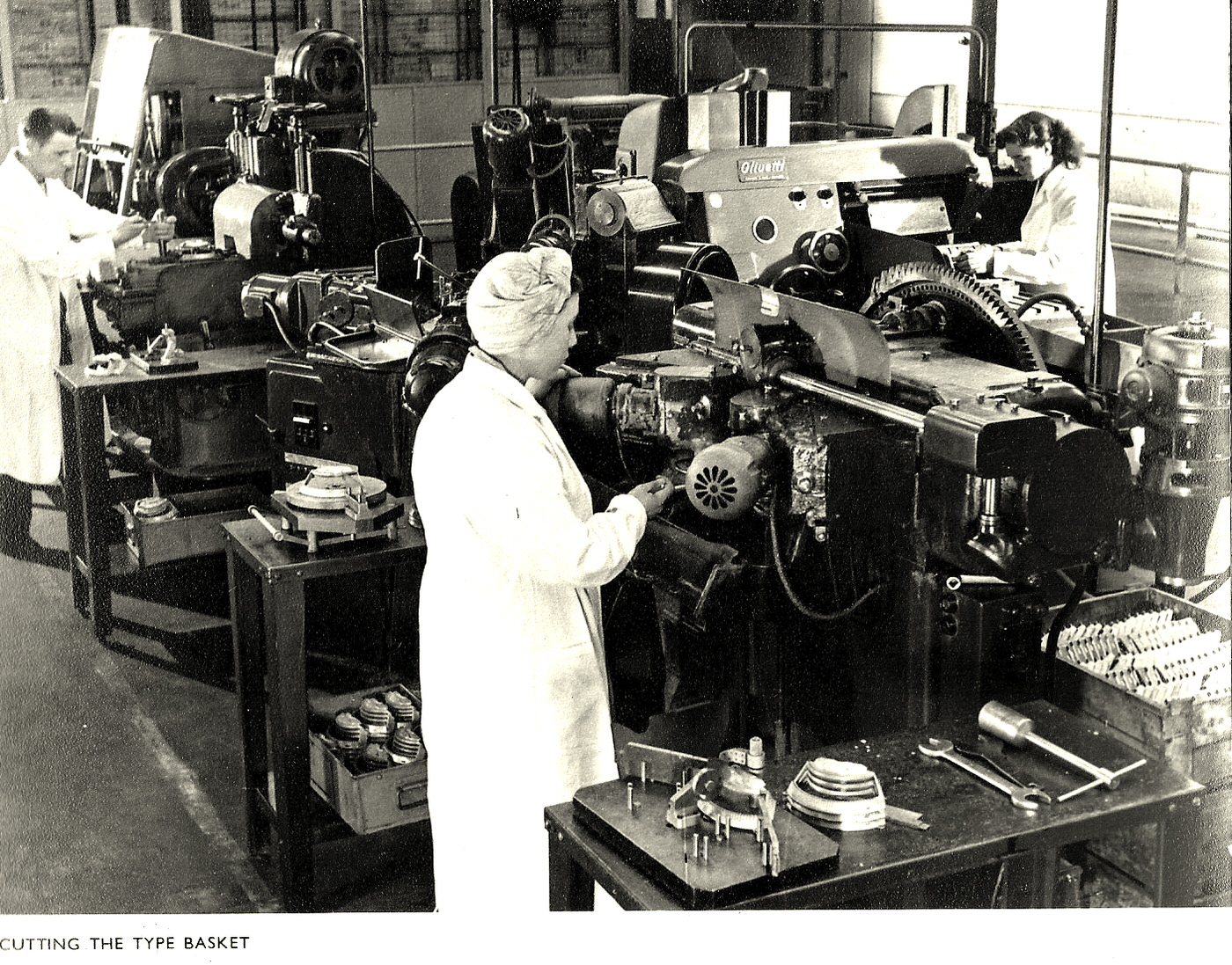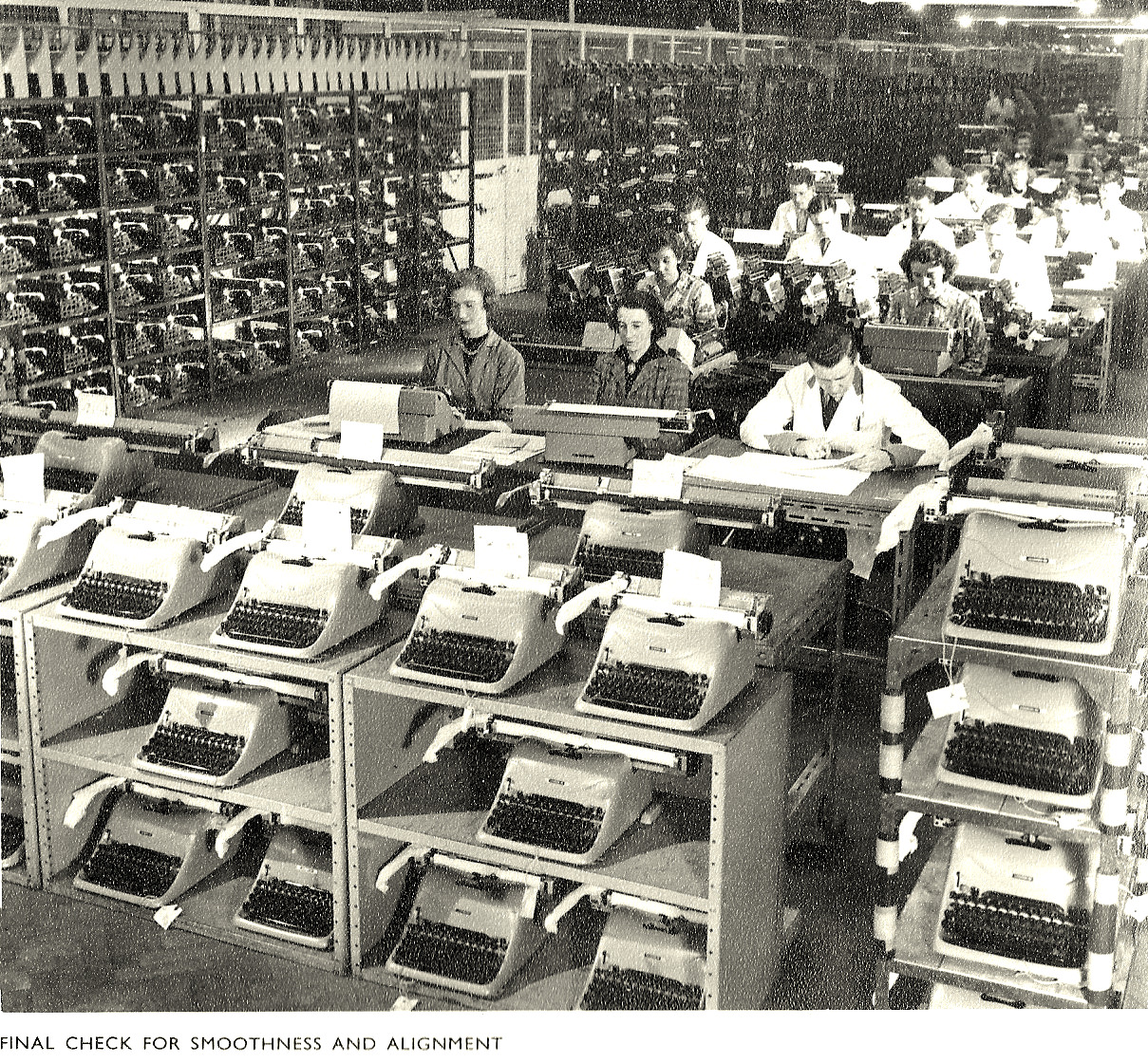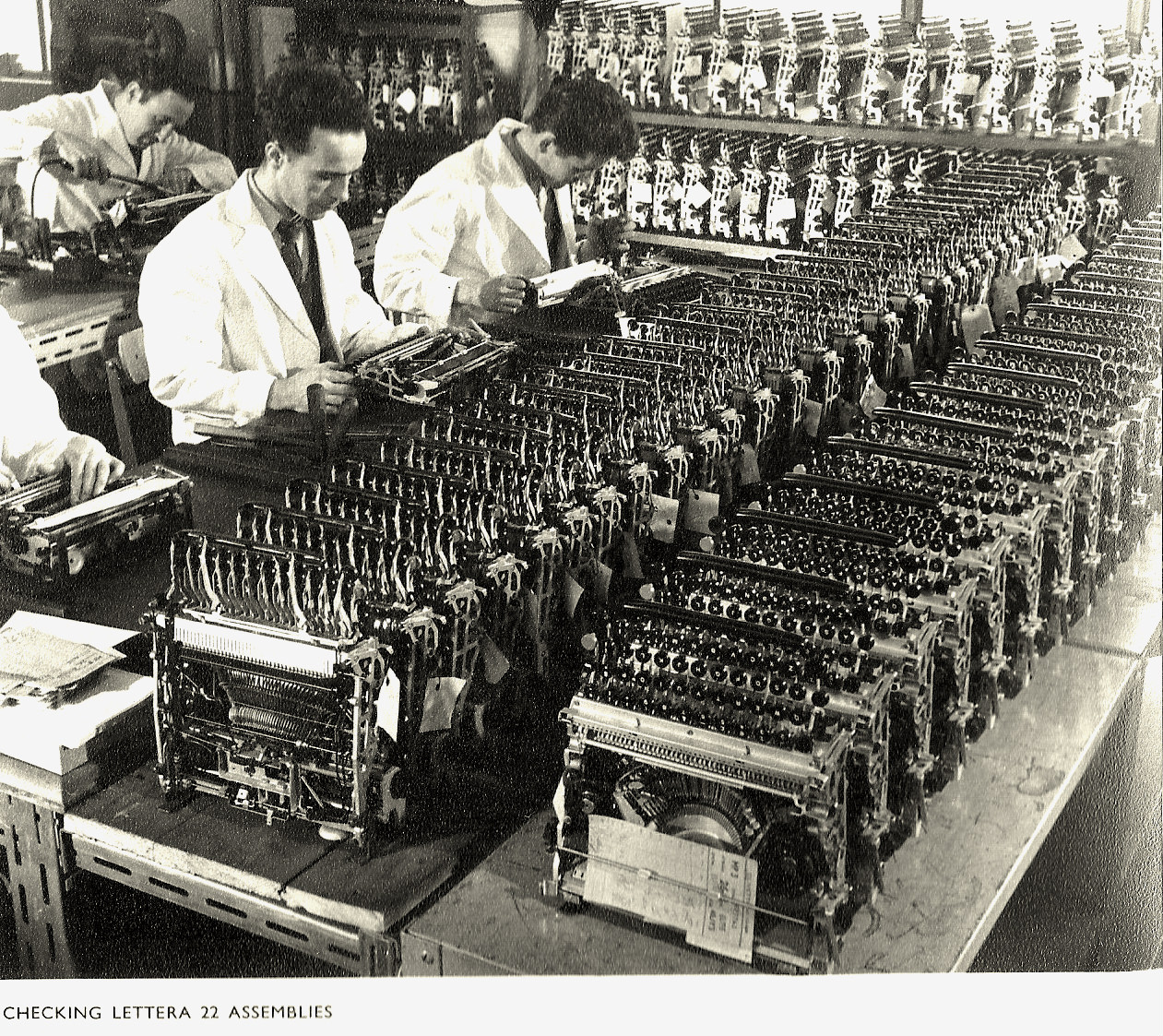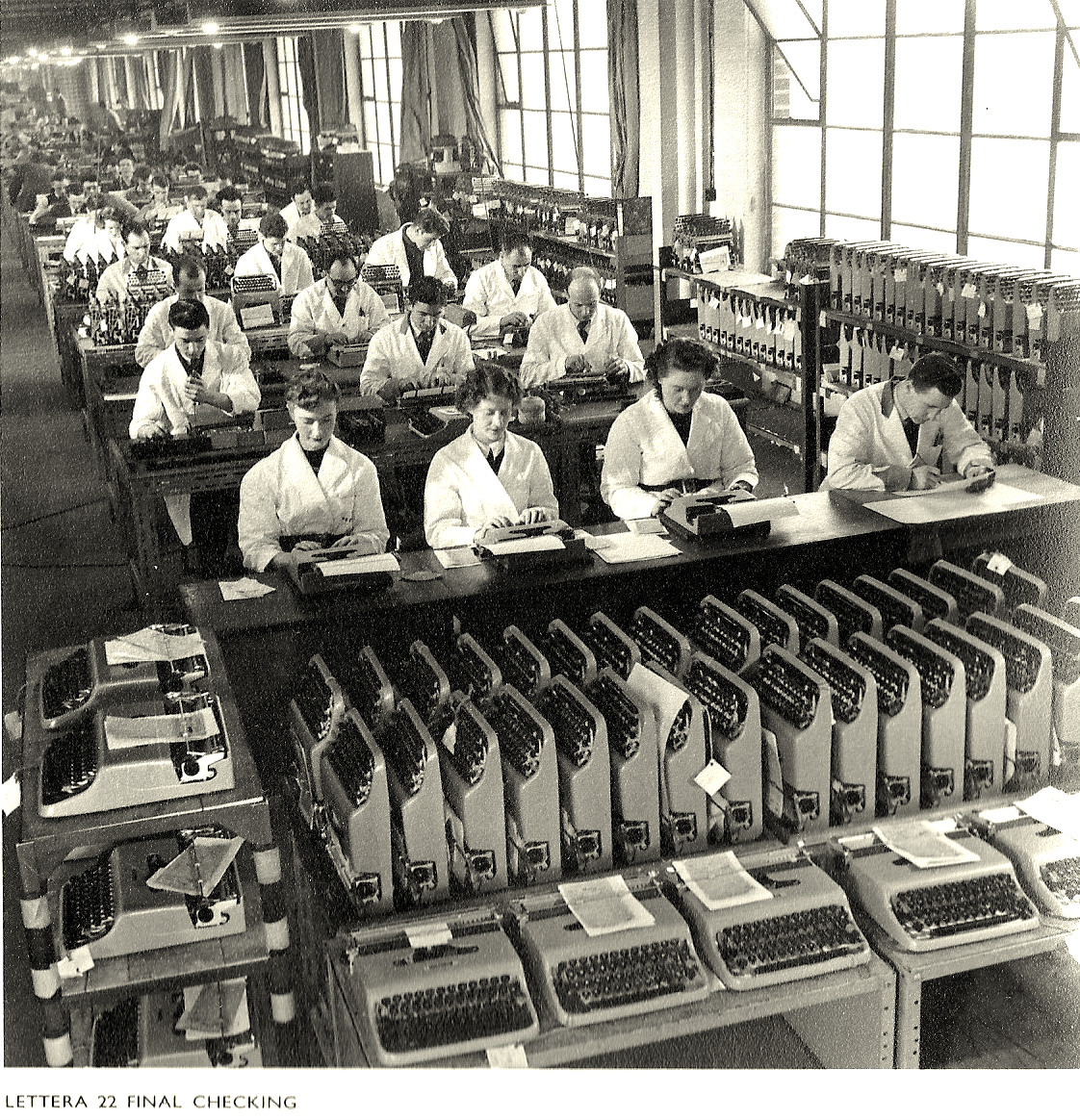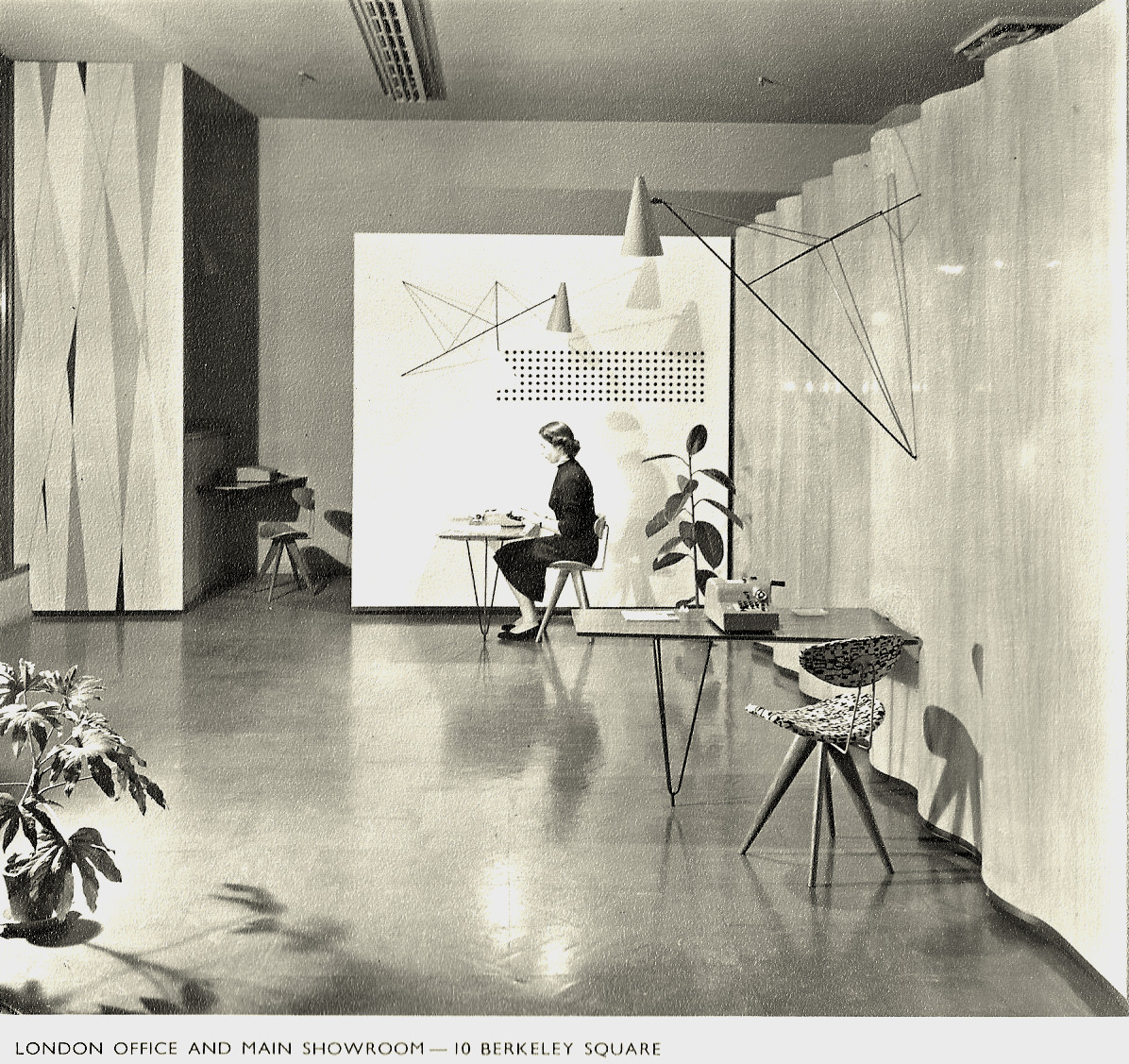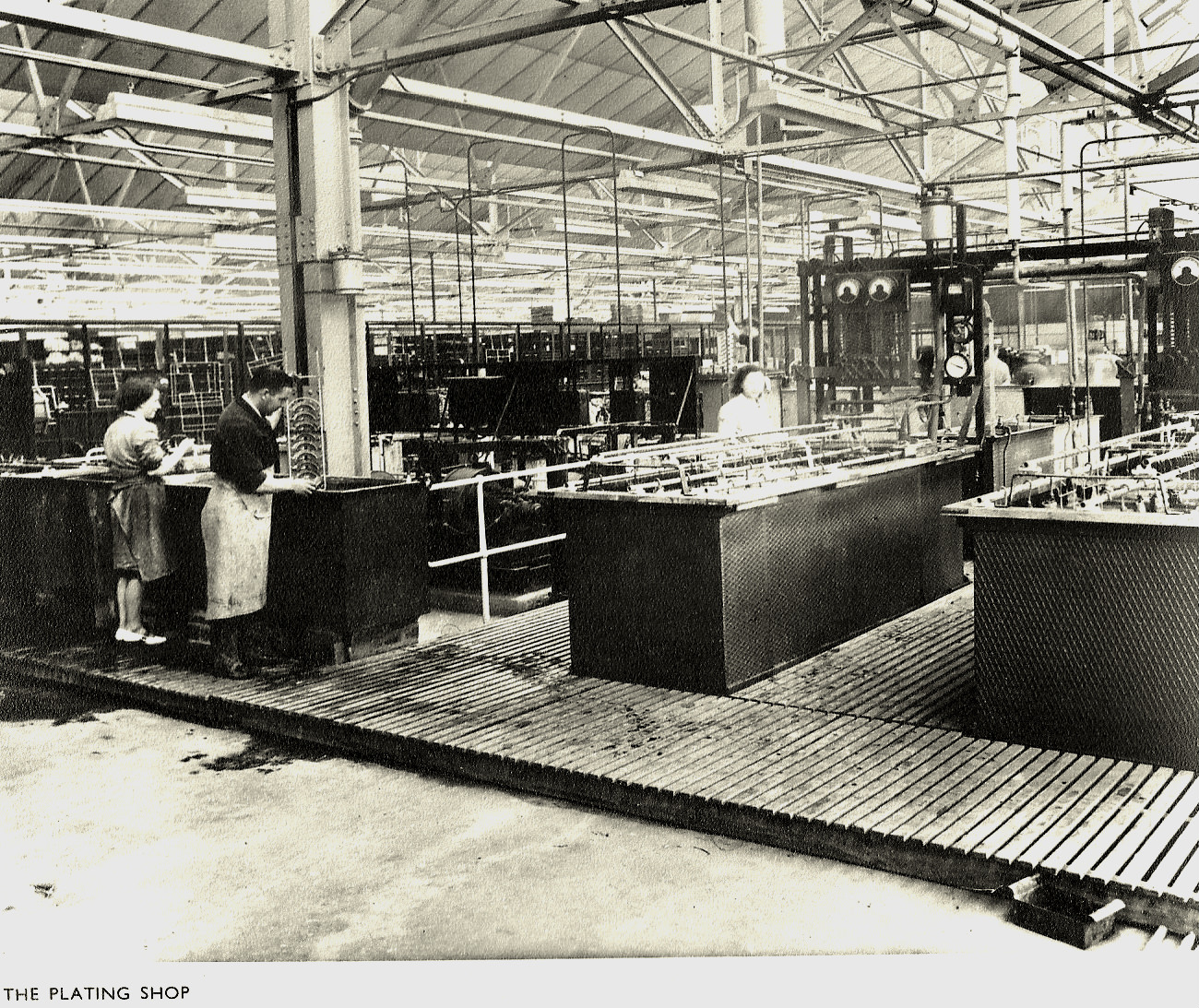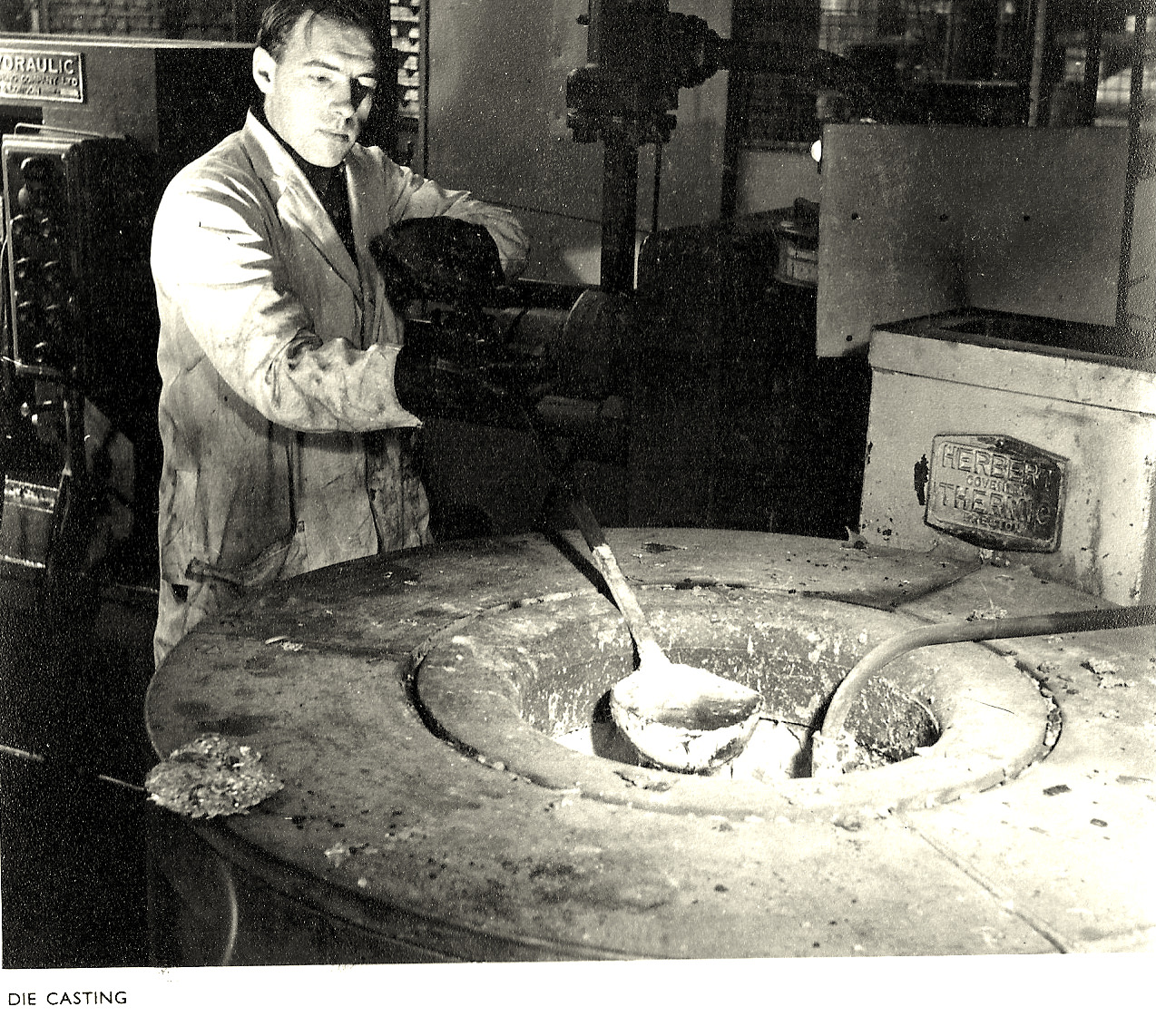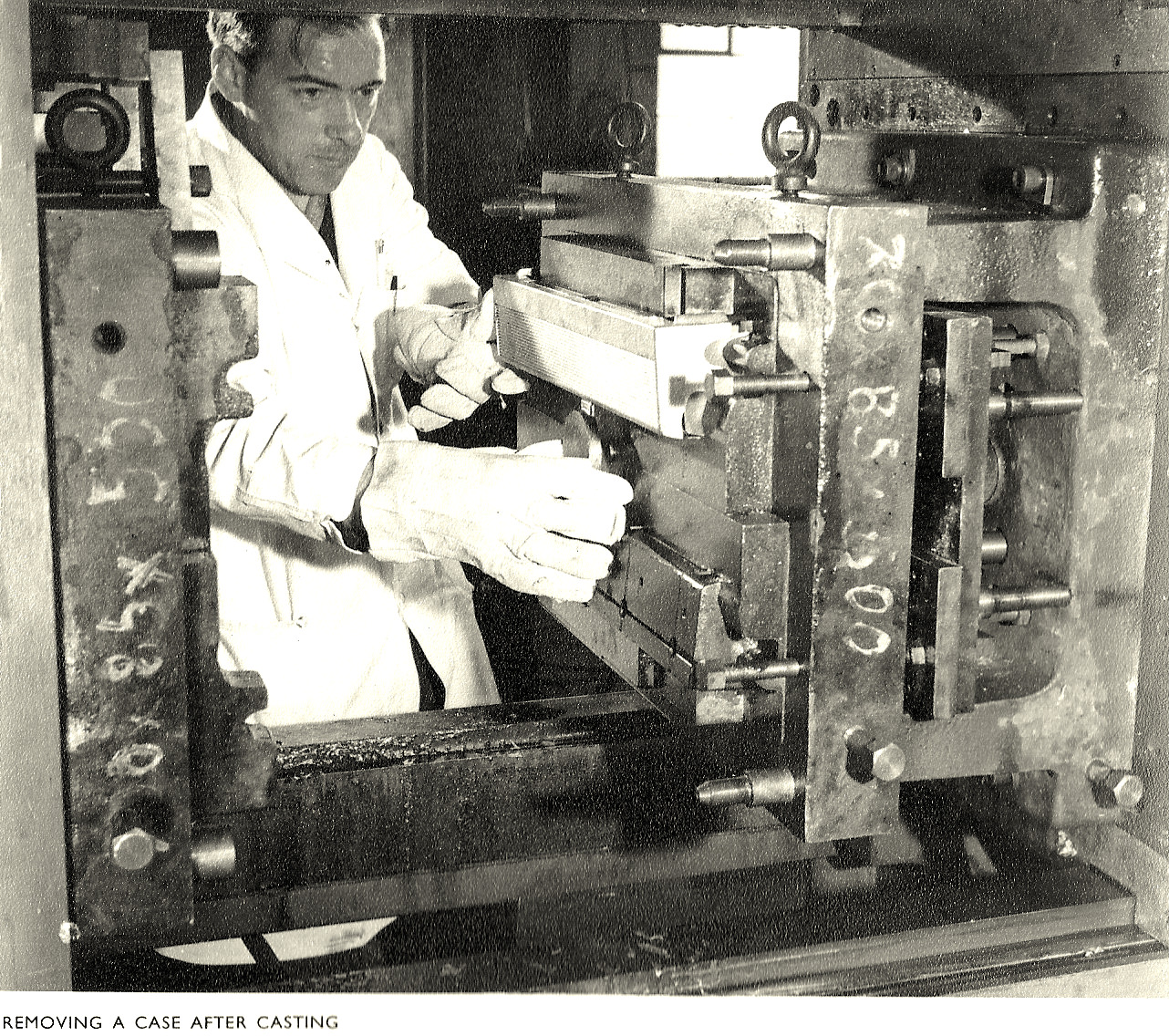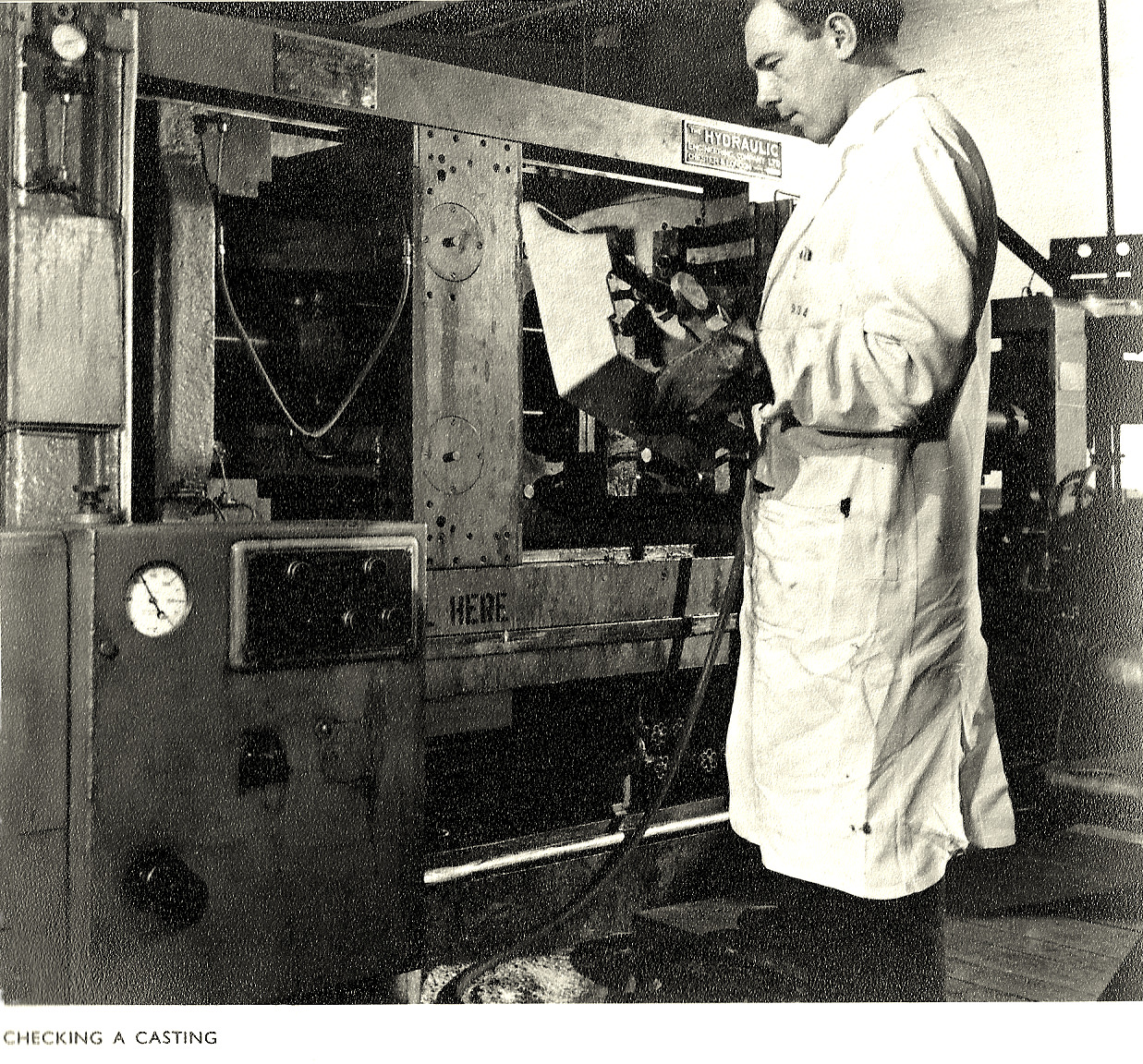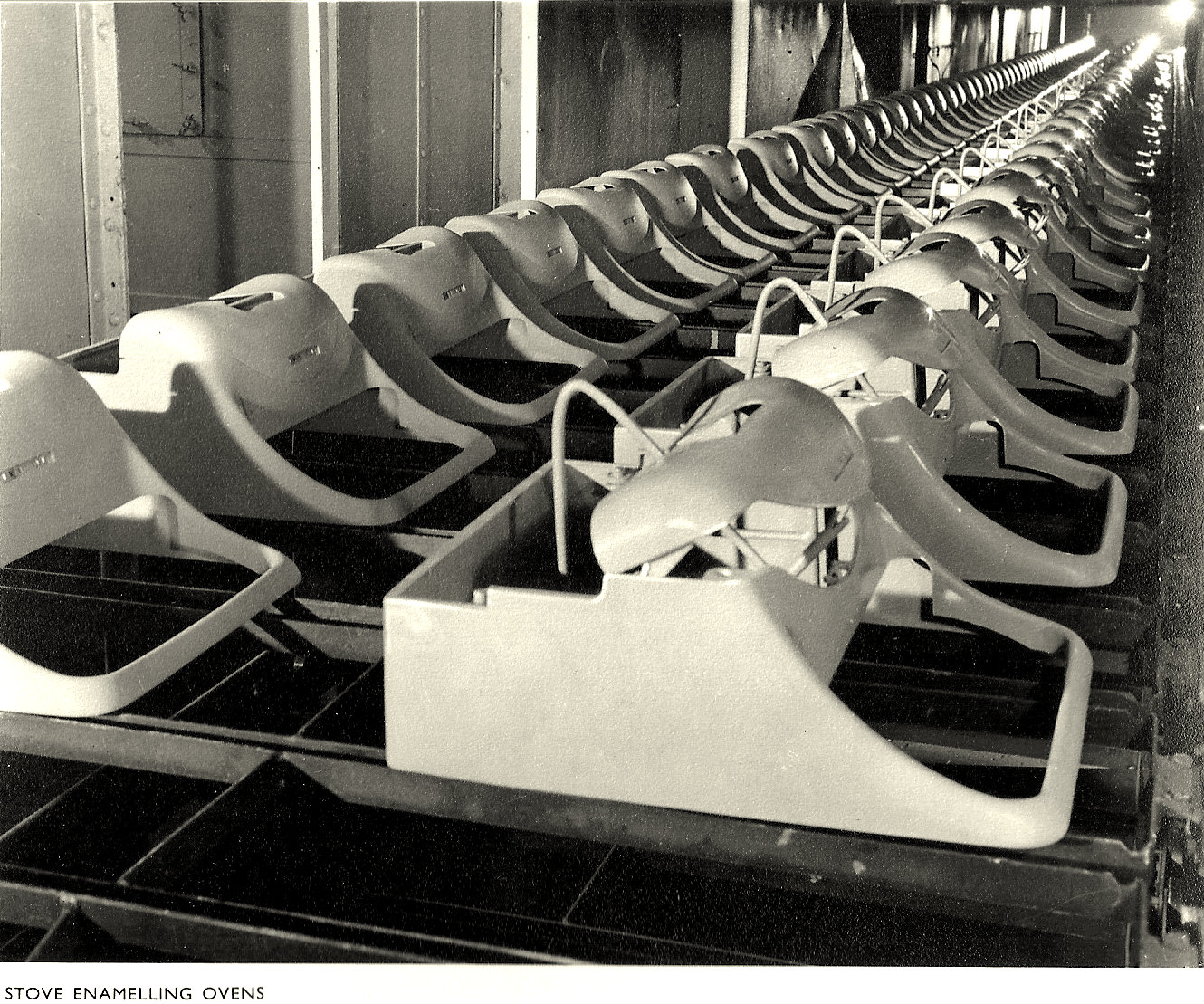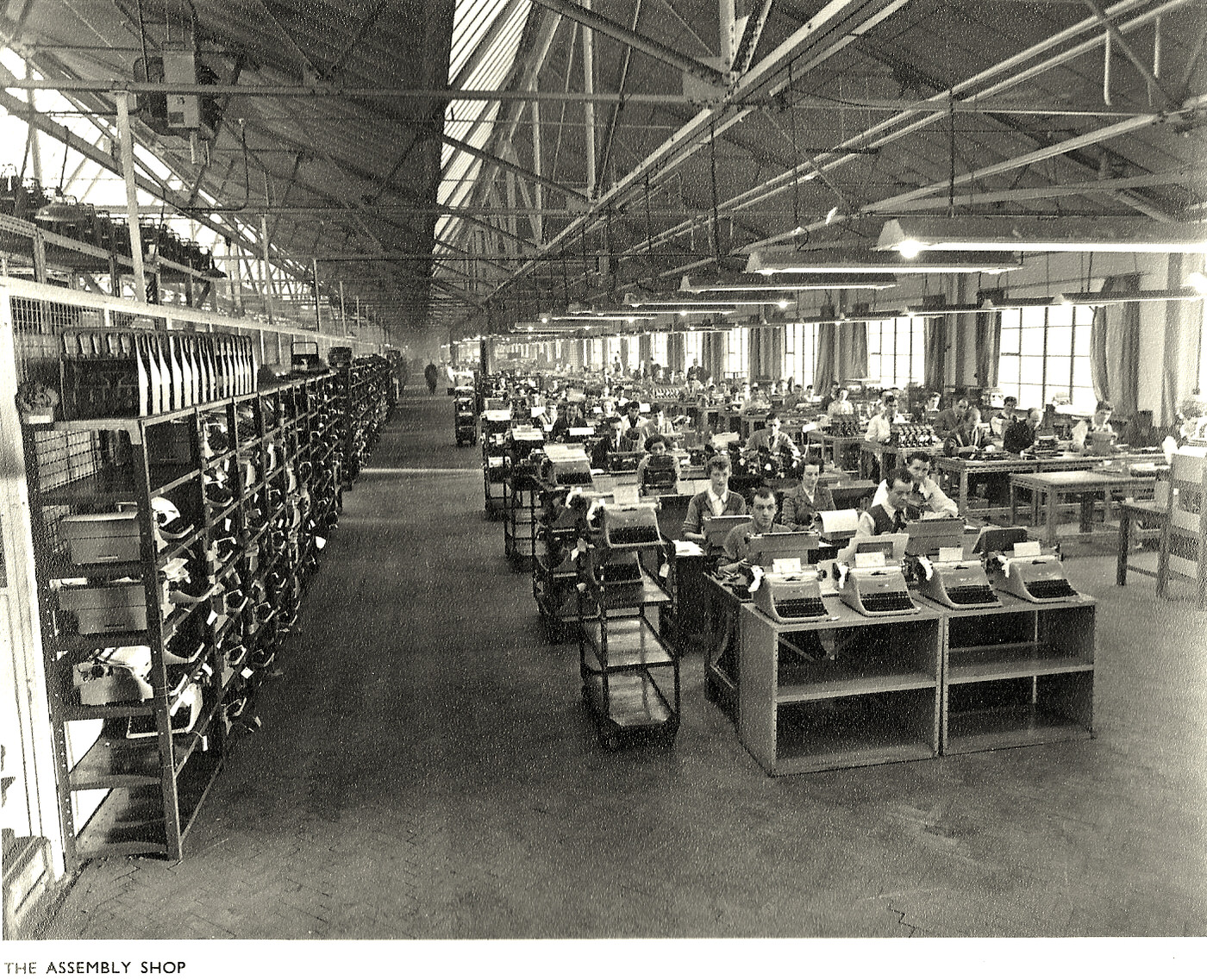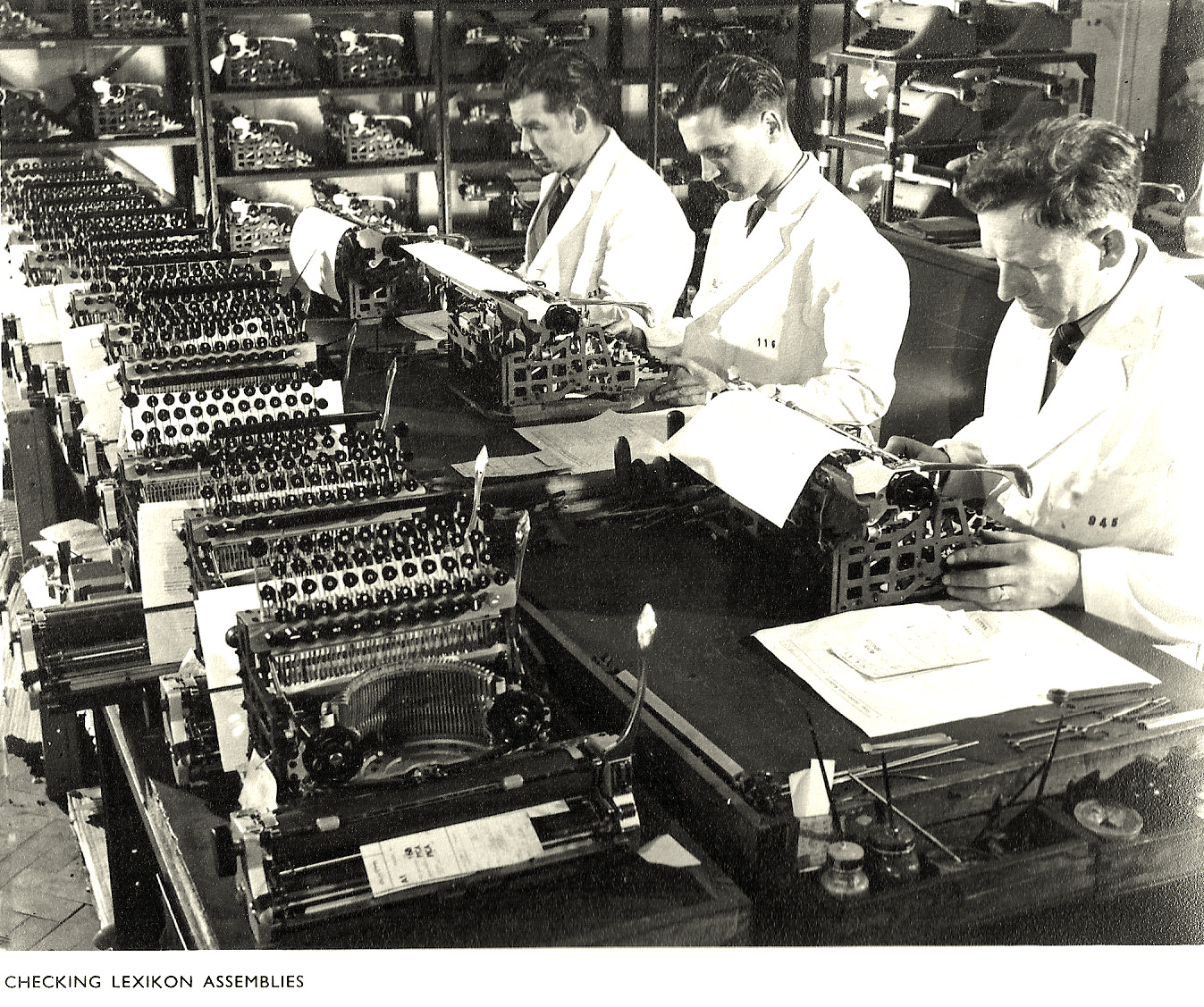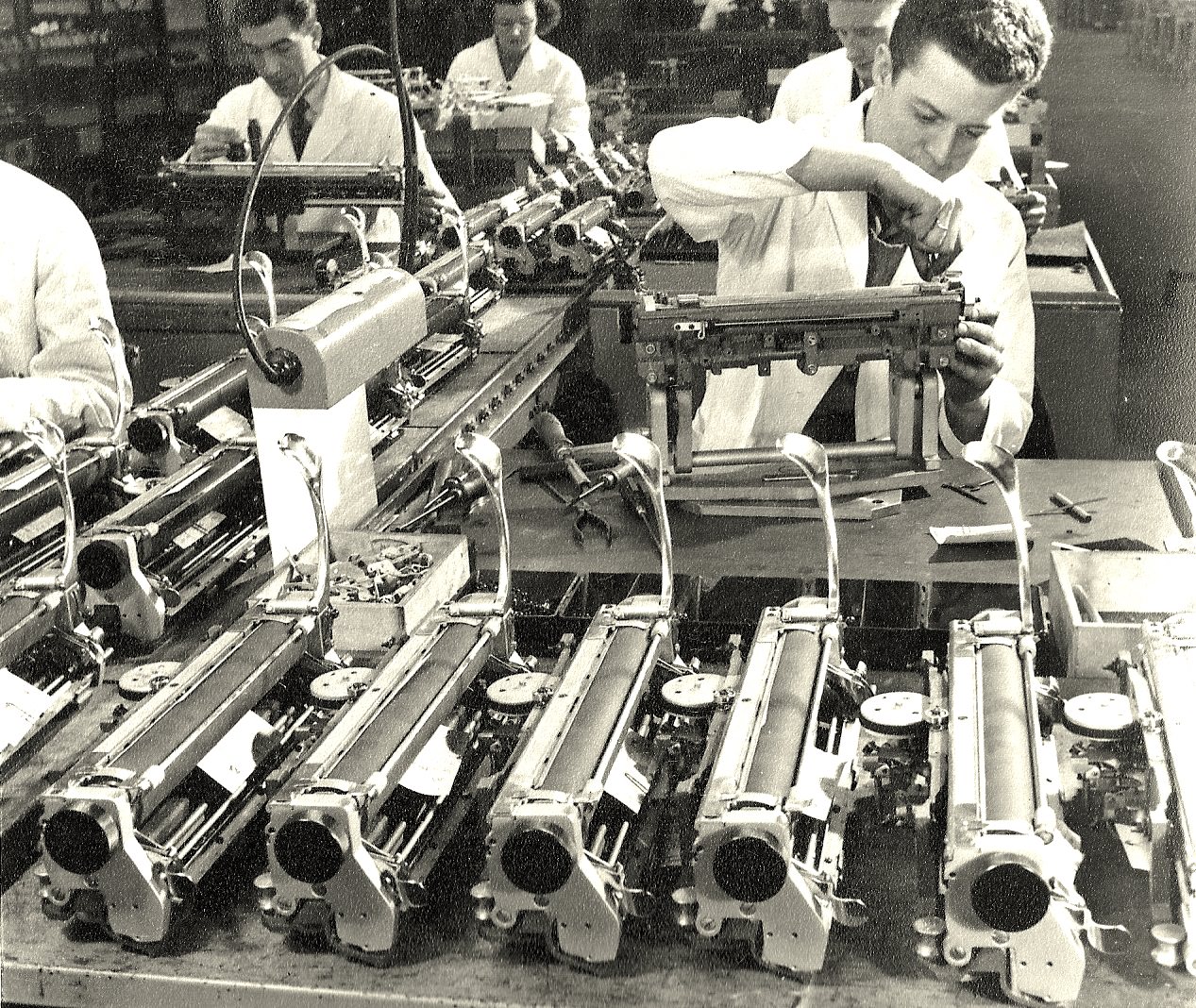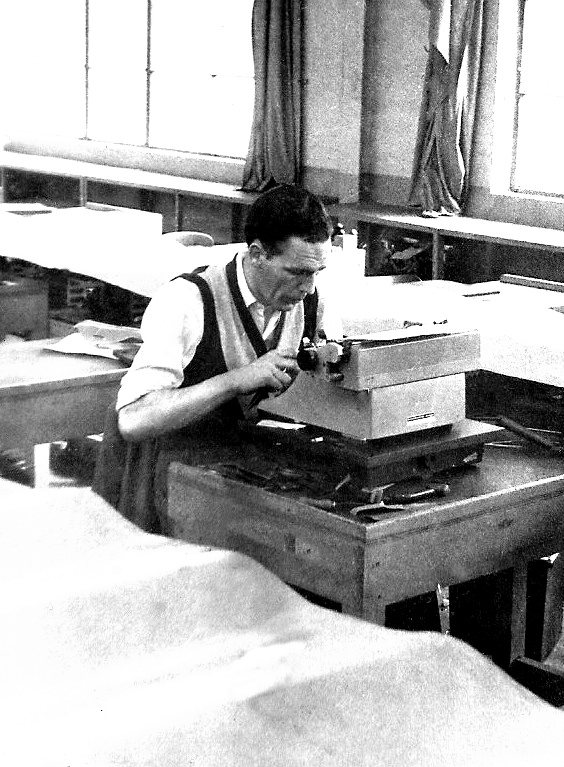The British Olivetti factory was a symbol of modern design and a source of livelihood for over 900 people in the 1950s. Most employees lived nearby, in the council estates that characterized this working-class area of the city.
Designed by the renowned architect Egon Riss, it boasted clean lines, large windows, and a bright, airy feel. It was a stark contrast to the surrounding red-brick tenements and smoky factories, a splash of Italian flair in the heart of Glasgow.
The factory floor was a hive of activity, where skilled workers assembled typewriters, adding machines, and other office equipment. Olivetti was known for its innovative and stylish products, and the Glasgow factory played a key role in bringing these designs to life.
The company, founded in Italy, believed in creating not just functional products but also beautiful ones. This philosophy extended to the working environment. The factory was designed to be comfortable and pleasant, with plenty of natural light and open space. There was even a rooftop garden where employees could relax during their breaks.
Olivetti valued its workers and fostered a strong sense of community. The company provided training and opportunities for advancement, and many employees built long careers there. Social events and clubs were organized, creating a sense of belonging and camaraderie among the workforces.


